Windowsization of MacOS
I'm killing it on the new project, so I felt comfortable to ask my boss for the MacBook, instead of buying it on my own, and have it as a work computer, since I'm attending quite a few meetings lately and it's a pain to look for a wall plug all the time.
To my surprise he didn't bat an eye and he even said it's better to go for a better SSD as well, so 16/512 it is. The only available color at that time was Starlight, which was my least favorite, but it was already ordered when I was told that.
The laptop arrived the next day and I was eager to try it. When I peeled off the protective sheet, I was quite stunned how beautiful the actually color is, basically silver with subtle gold accent. Looks so lavish and I love it! :-)
I had some basic experience with MacOS, so I wasn't that lost, but 30 years of daily driving Windows has it's toll. I started to look for ways how to make it feel more like “home” and apparently that's quite common thing among Windows users :-)
Document based, not Window based
Raycast, removed Rectangle
Double Commander
Mouse fix UnnaturalScrollWheel
AltTab for hidden windows, Shift instead of ShiftTab to go back is great!
App to remap keys
MacBook Air
For years I've been struggling with iOS development, as I didn't have a direct access to a Mac, so I had to circumvent this issue and it wasn't always easy. I feel like I've spend similar amount of time coding and getting to be able to.
My daily driver is now entering it's second decade of service and there wasn't a sufficient replacement so far. It's a really reliable workhorse, but as time goes by, I'm getting afraid it can kick the bucket any day - in the past I had some issues during bootup, so I don't even turn it off any more, only put it to the Sleep Mode, and restart just few times a year, usually to resolve some annoying issue that couldn't be resolved in any other way.
Travel device, not that light (1.24 kg / 2.7 lbs, 3 times Apple Magic Keyboard) but almost as small as my old ThinkPad X31 (3 cm wider, but 1 cm shallower and 2 cm thinner)
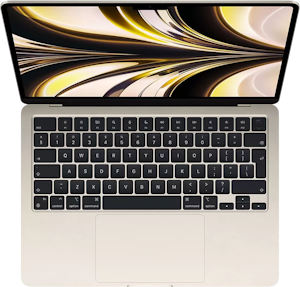
MacBook Air 13" in "Starlight" color
I also kinda dislike a second device, when I prefer to have everything just in my phone. But the tech simply isn't there yet.
Phone with kbd is clunky, turning on, no on-lap possibility
Dev debug device
Xcode dev
Great tech - Apple Silicon, larger display with workable resolution, TouchID power button, backlit keyboard, Magsafe as well as USB-C charging, ridiculous battery life
No OLED
Sync files - daily backup to USB (broken USB port), via phone
At home I keep it i “clamshell mode”, connected to a simple dock with passthrough power and HDMI cable to my LCD screen as HDMI2(?), use my Magic Keyboard and second position on my Logitech mouse.
M3 for xcode, months of support, latest macos
iPad as a Windows display
I don't have second LCD at home.
I've always had a tablet laying around, either ancient iPad 2 in the office, or my mother-in-law's old Android tablet, which I use when baking or cooking to view the recipe, because I don't mind getting it dirty.
When I finally decided to buy myself a digital piano, I kinda like Synthesia. I originally purchased a license on my iPad, but later I found out if I'd purchase it on the website, it will work on all devices! I was kinda mad at myself I didn't do proper “due diligence” and it leželo mi to v hlavě tak dlouho, až jsem se rozhodl koupit i tu webovou licenci.
Little while later I learned, that the “Synthesia LLC” company is in fact just a single developer. Now I'm glad I supported him.
smart home addition
acts like secondary display, you can position it in settings. connects either via cable or via wifi, which basically means you can access the PC anywhere in the range. It opens a whole lot of new use cases!
added touch - testing qard! It doesnt support mouse on iPad, but it does support keyboard, so I can use Magic Keyboard connected to the iPad and thru the app write on my PC.
Speaking of mouse, invert scrolling
iPhone 13 mini
Here on the blog I digress quite often, so this time it will be how I decided to upgrade my old iPhone SE from 2017 on this year's Black Friday.
Long story short, I don't want to migrate do Android (yet?), even the smallest iPhone 14 is too big for me, rumor has it another mini iPhone may never come, so this form factor won't be any newer, so why wait?
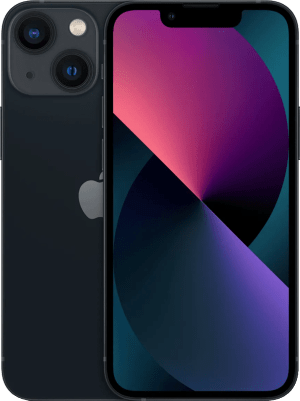
iPhone 13 mini
The transition would have been smooth, but quite a few of apps I used were pulled out of AppStore, so for about three days I tried (and failed) to move them to the new phone. I even purchased a license of iMazing, but it was no help either – apps were either 32-bit or otherwise unsupported by the current iOS version.
So I finally wiped the new phone and used the intended way of wirelessly transfer everything from my old iPhone to the new one. The process looked like magic to me, to be honest.
I have to admit I'm more happy with the investment than I anticipated. While the body is only slightly bigger, thanks to edge-to-edge display the screen size difference is astonishing. I quickly adapted to the size, the 4" screen of SE now looks so tiny! :-)
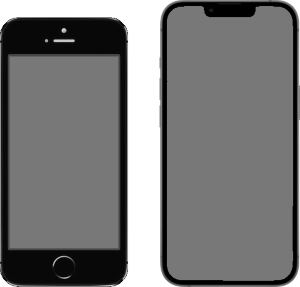
iPhone SE vs iPhone 13 mini
On SE I had Touch ID difficulties more often than I would like and my earlier attempt to refresh stored fingerprints resulted in auth resets and lock-up from my bank app (I didn't have backup 2FA method for some reason), so I wasn't keen to do it again. But Face ID is quick and easy, it's so seamless it makes me joyful :-)
It was good I had the SE around, because I had to migrate all the bank and auth apps, this time without a lockup only just because I was able to use the “previous” app on the SE.
I didn't want to migrate to Android mainly because of the long history of various app data I collected – I've been an iPhone user for over a decade now. But several apps wasn't compatible with the current iOS version, so I lost that anyway. With the new phone I'm more careful about data formats and migration options. I'm still waiting for my ideal phone and if it's Android or Windows, so be it.
Headphones upgrade
Recently I stumbled upon an article about wireless headphones, that support “multi-point connection”. It means it can connect to multiple devices at once and almost seamlessly switch between them. They mostly can't play from both devices simultaneously, but I don't need that.
I noticed most of them have ANC and built-in mic, which could improve my working experience – I attended most conference calls from my phone so far (for reasons) and it wasn't convenient. Another great feature is indeed no wire, which keeps entwining to my chair even after all the tweaks I did.
At first, I was ready to pay up to $200, but for this price they all had some issues, like low quality mic or bad multi-point handling. Much better reviews had those with a price tag over $300, which seemed quite ridiculous to me. But I felt the added value is there and I was going to ask my boss to buy them for me as a token of appreciation for all the over-times I'm doing.
I was wondering what issues have low-end headphones and where the price for all the features I wanted begins. I stumbled upon Anker Soundcore Life Q30, so-called best headphones below $100. I was amazed how good the reviews were. It had everything I wanted, even in the original starting price bracket, but as usual, the mic quality was bad.
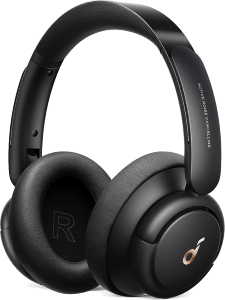
I was almost inclined to give them a try anyway. The final push came from a Reddit thread, where users were reporting huge quality improvement after a recent firmware update. So, I ordered them from AliExpress for nice $74 (I missed a sale for $65), they even shipped from a nearby EU country, and it took just 6 days for them to arrive.
First impressions were mediocre. Overall, I liked them, but they often refused to switch to the other device and the ANC was laughable (I never had ANC headphones before, so maybe my expectations were too high). But Anker really did improve the mic quality, because I asked about it on several calls and nobody complained. I'd say “not great, not terrible” :-)
My ears get a bit warm in them and I'm worried their material (fake leather?) may start to peel off soon. They don't sound as good as my Fatal1ty, but it's OK. They leak sound a bit, but who needs volume above 50 anyway. The signal is decent even with Bluetooth 4.X, they work nicely thru two regular concrete walls, but they can't cope with thick brick (stone?) walls in our basement office. I don't blame them; Wi-Fi struggles as well.
Speaking of the office, the major turning point came when I needed to pee during a long call. I kept them on (and double-checked I'm really muted) and after I did my business, I looked into the mirror, to see how I look wearing them.
I noticed right cup was slightly popped-open! I can't tell how it happened, I'd say they must have been shipped like that and I never saw it before. Back at my desk, after I fixed that, I felt strange for a bit, because suddenly I didn't hear myself typing or clicking. It fixed the ANC! Now with music playing I can't hear much else.
I also noticed the switching between PC and iPhone got better, but when I disconnect the phone, I can't re-connect it back, until I turn the headphones off'n'on again. I charge them once a week, which is excellent and confirms around 40 hours of battery life with ANC on.
I love the transparency mode and its touch switching, it helps me not to shout when I'm speaking during calls, but apparently not that much.
I purchased another set of magnetic charging cables from Olaf for easier top-ups. They arrived after two months, because the package was shipped from China to Belgium by train, which itself took 27 days.
Sadly, they aren't 100 % compatible with cables I already have. They have bigger ridge on the pin and less contacts. Too bad I didn't notice it was a frequent feedback from buyers.
Tecomat Foxtrot
I'm planing a smart home and in Czechia we are quite spoiled for choice: Control4, Domotron, Fibaro, Haidy, iNELS, Jablotron, Loxone and more, but I like Tecomat Foxtrot 2 from Czech company Teco the most and I'm not alone – some of those companies I mentioned use Foxtrots as well.
The central module is basically an industrial PLC, that Teco has been manufacturing for almost three decades. It uses TCL2 and CIB bus lines to connect up to 32 modules per controller. It also supports other protocols, like Modbus, TCP/IP, UPD/IP or BACnet. Teco claims Foxtrot aims to be as compatible as possible, which is exactly the approach I was looking for.
The central module in its second generation is equipped with two RJ45 for two independent networks, USB host and USB client ports, SD card slot (when the internal memory is not enough), and a slot for 4G/LTE modem.
For programming the PLC there is “Mosaic” IDE, which supports different programming styles, like graphical “CFC” (interconnected blocks) or Pascal-like “ST”. Mosaic contains a lot of additional features, like designer for GUIs (which run on embedded web server) for your control panels and browsers.
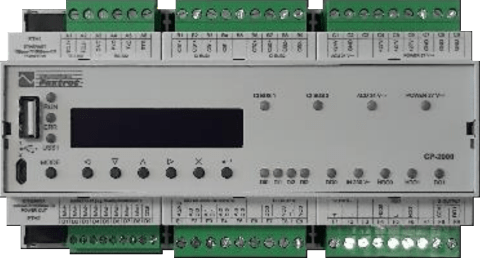
Tecomat Foxtrot CP-2000 – central module for (not only) smart homes
Of course, all of this come at a price... of price :-) I consider the central module itself quite reasonably priced for about €600/$700, but afterwards every stupid CIB input device (= mostly buttons and sensors) is like €100-200/$115-230 per piece.
Anyway, it should be no problem to integrate it with Qik and even add some program support for Foxtrot into it.
Magnetic USB cable
I had troubles with a phone battery, so before replacing it I looked up how to properly charge it. Li-Ion batteries are happiest around 50 %, apparently, and don't really care much about how many times you plug them in.
So it means charge it often for shorter periods of time and if you can, don't charge it over 80 %. That also means you'll be wearing out the cable port more, so I decided to try out a magnetic cable.
Because you need to keep a small part with magnet and pins in the phone's port all the time, it's hard to use other cables, obviously. I started with three cables, two for home (computer + bedside) and one for work. Later I added one longer to keep in the car.
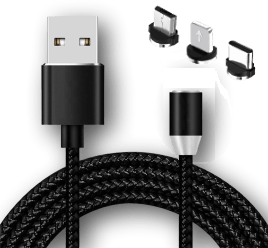
I rarely charge on the go, so I have an original cable in my backpack. It's also for my peace of mind, so I don't need to worry it may magnetize something I throw in there. I also still have the luxury of 3.5 mm jack on my phone, albeit I use Bluetooth earbuds for workouts, so audio is sorted out as well.
What I love about the magnetic cable is the magnet is quite strong and to connect it I simply grab the phone and casually move it to proximity of the cable connector, which snaps on promptly by itself. Brilliant! It would also work great in a phone cradle, but I don't use one.
If you have proper magnetic cables, you can share them across devices. The cable shouldn't care if the bit in your phone is shoved into a Micro USB, USB-C or Lighting port, and the other side of the bit is always the same. Make sure the cable is not only for charging, but for data as well!
Small disadvantage is I apparently used the cable to help stuff the phone into my car phone holder, because now I'm having difficulties :-) Cables I use have blue LED, which is quite bright and I had to put a rubber band on it for my nightstand.
And sometimes the phone's display turns on for no apparent reason, like if it lost a charge for a brief moment, but it didn't. I don't know if it's caused by the cable, or it's a software issue. It doesn't occur that often though.
Amazfit Bip
I had my Xiaomi MiBand 1s (also called “Pulse”) fitness tracker for three years and it worked rather well, the only bigger issue I experienced was with the silicon rubber band, which lasts no more than a year. Of course the measurements are not precise, but for under $20 it's amazing.
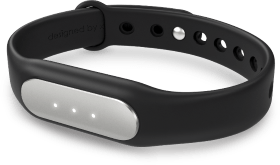
I didn't (and still don't) like newer MiBands, because except for the screen it didn't offer much more. But I also didn't like wearing something 24/7 on my wrist, that doesn't tell time, so after about a year of serious thoughts about upgrade, the price for Amazfit Bip dropped below my threshold of $65 at local seller and I got myself a treat.
The good: I can confirm it's incredible battery life – during first charge cycles I even exceeded it, even with occasional runs with GPS on and HR assist for sleep. GPS precision is fine, I'd say similar to my iPhone SE.
I use almost all of it's features – SMS notifications are great for 2FA or bank codes, my phone is completely silent, because all incoming calls are notified just by watch vibrating (except when I accidently turn DND on :-), also I love the silence of vibrating alarm clock.
Countdown timer is useful for cooking or brewing coffee. It's great that alarm can be turned on/off on the screen, but I wish to be able to set it on watches as well, it would be possible in the same way as countdown timer. And I even occasionally use the barometer, altimeter or magnetic compass.
The glass on the display seems to be quite durable. I try to be careful, but it's not always the case and I have far less scratches, than “incidents” I had.
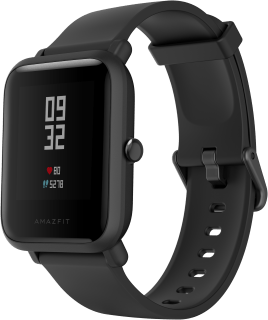
The bad: I can find just a few dislikes – they are quite thick, so they push to my wrist in the bed (as expected...), which MiBand didn't and that was the major cause I had such a hard time finding it's successor.
I found (and reported, without a response) several bugs in the Mi Fit app:
- Shortcuts are customizable, but will reset on the next sync.
- Touchscreen sometimes doesn't work properly or at all; after a while it starts to work again.
- It sometimes won't sync and I have to try it multiple times.
- Sleep history doesn't show up (I lost the history until the next update few days later).
I experienced strange battery drain, that was fixed by hard-reset. Now I'm back to 35 days.
Updating A-GPS takes about two minutes, which is usually fine, but other times you have stuff to do and you're forced to wait. And I miss it doesn't tell sunrise and sunset.
The ugly: It can't log longer workouts, like 6 hour hike or 3 hour run, sync of such workouts takes forever. What is even worse is quite often (I'd say 1 in 5 workouts) they hangs during an activity tracking and I lose the progress completely! That's REALLY annoying. I'm not able to find a pattern, but it seems it's not that often if I don't wait for GPS before workout. On the other hand, it sometimes hangs twice in an hour.
And of course there's the “political” issue of Chinese manufacturer with uncertain working conditions and quite suspicious requirement to be online for the app sync to work. My PERSONAL opinion is the app is sending some data out.
2023 update: Due to thickness of the watches I ultimately decided to put them aside during the night, so I sadly turned off the brilliant vibration alarm clock and I also didn't need HR monitoring any more. With a new keyboard they also started to bother me while typing. On the bright side, thanks to this the battery life skyrocketed, with a few workouts per week I still charge them only every ~50 days!
Cheap BT headphones
As usual, when I want to try a new tech, I start with the cheapest usable option available. In this case I found Bluetooth Sport Earbuds for five bucks, so I gave them a try.
I must admit, running without cables was really comfortable and I started to wear them on my “grocery walks” as well. Build quality is quite decent, but they have some flaws, like one earbud is louder and the other makes crackling noises when inserting into an ear or lightly pulling on the cable.

The in-ear horn is nice and shirt clip is a must to reduce jumping of the on-cable control box. I made a loose knot on the cable for the clip to stay in place, but It's often not enough, so I just stuff the control box under my shirt, hat or neckband.
AirPod-style earbuds (“truly wireless”) would be much better though. I had health concerns about effect of two wireless devices right next to my brain, but I learned for music they're only in receiving mode and themselves don't emit anything.
It does make sense, as transmitting is more power hungry, so if there's nothing to send, it's better not to do it and save battery.
UPDATE: Yes, my current favorites are truly wireless earbuds. I tried a few cheap ones and while they work nicely, I'll probably invest more next time and they should go a bit deeper into the ear, so they don't fall off and the sound is usually better.
Dream device
I've always inclined towards all-in-one devices. I used one of my first salaries to purchase HTC Touch Pro (also Fuze or Raphael), compact Pocket PC smartphone with a slide-out five row QWERTY keyboard.
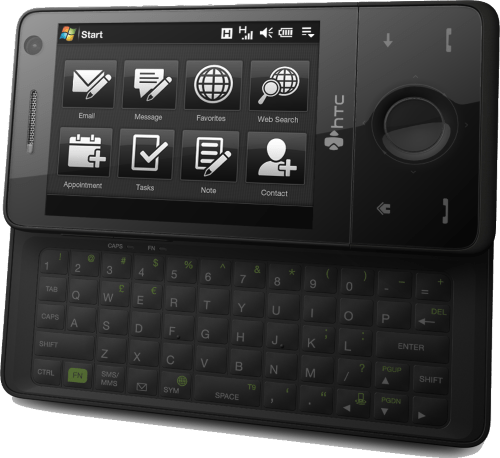
HTC Touch Pro (2008)
It was an awesome device and I was quite sad seeing the Windows Mobile platform and later XDA community around it die, because the phone effectively died with it. To this day, almost a decade later, I still consider it the best one I've ever owned.
I'm struggling to upgrade my current ThinkPad T430s, because it features everything I expect from a workhorse laptop, but it's starting to be out of its breath, despite 16 GB RAM and system SSD. Upcoming ThinkPads either miss dock connector, secondary hard drive option or dedicated GPU, or weight over 2 kg (4 lbs). Or have overheating issues.
2022 UPDATE: Now I'm fine with USB-C docking, if there's a power button on the dock (Thunderbolt 4 is ready for that). Also I learned to use tiny USB drive as a secondary storage for crap and backups, so single 2 TB M.2 will be enough. Thanks to that my options have widened, at least that.
I'm happy with my iPhone SE, I did some critical work from it, so I appreciate what Apple and app developers did with iOS. But what I miss is to be able to dock the phone and use it as a PC or Mac. This is already quite possible with Android or even a modern iPad, but... it's still a mobile device.
Actually, just auto-mount as an external drive might do the trick, because for me the main task for the phone is to carry all the data. Not just documents, code, multimedia etc., but program binaries as well – I don't want to update them on every computer I use it with.
Music
I can't imagine myself working without headphones, I wear them all the time while working and I'm working all the time :-) At home I use good old Koss Porta Pro, in my office I have Creative Fatal1ty HS-800.
I'm satisfied with both, Fatal1ty has more basses and were little tight when new, causing a minor headache, but I suppose I like them more. Porta Pro are proven by many and the only bad thing is the foam covers wears out every couple of years.

Koss Porta Pro and Creative Fatal1ty HS-800
I mostly listen to classical and relaxation music, or on-line NYC based radio. The radio is especially nice thanks to the time difference - in the morning (my local time) there are no commercials, because it's night over there, then the great morning show comes and after that they have few hours commercial-free, which concludes my usual work day.
I use music as a distraction barrier, so sometimes I listen to a single track over and over again. My personal favorite is a MIDI track from a 90's adventure game, spiced up by a great sound font. But I have other favorite tracks I'm playing frequently.
Google Glass
People say that New York City you can either love or hate, noting in between. From buzzing around Google Glass I can say the same about this gadget. Even though I find myself on the side of “hate”, as I see it as a major breakthrough of my privacy, from QetriX’s point of view it’s a major opportunity. It’s exactly what I’m focusing on for QB – tiny pieces of important/interesting information on the go.
I can tell apart those opposing feelings easily, because my personal concern is about the built-in camera, whereas the opportunity is spurting from the head-mounted (or “heads up”) display.

Google Glass Explorer Edition
The true resolution of the display remains unknown, but for apps Google recommends 640×360. Google also created quite strict guidelines for creating apps, which may keep the environment homogeneous.
I’m working on use cases for small resolutions, because Glass is not the only device with such display. We’re hearing more about various wearable devices these days, like bracelets or watches (Pebble).